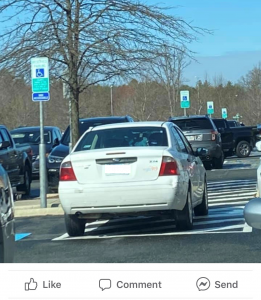By Michael J. Ash, Esq., CRE
HENRY “HANK” ROWAN JR.’S induction furnace design is used throughout the world to melt metal, but he is best known for his philanthropy. In 1991, Hank and Betty Rowan donated $100 million to Glassboro State College, which became Rowan University. Rowan University began an almost 30-year program of development that resulted in new education programs, departments, and facilities. The physical campus and student body have expanded tremendously, and its hometown of Glassboro, N.J., has also been transformed.
One of the typical controversies in a college town is the balance between student and resident parking. In Glassboro, this recently reached the New Jersey appellate courts in the matter Glassboro Guardians v. Borough of Glassboro, Docket No. A-1670-16 (April 18, 2018).
In an attempt to control the use of on-street parking and restore a balance between student and resident on-street parking, the Glassboro Town Council adopted an ordinance requiring all rental properties within the municipality to “provide a minimum of one off-street parking space for every one authorized occupant 18 years of age or more.” This new parking regulation was challenged in court by the Glassboro Guardians, a nonprofit corporation comprised of individuals who own rental properties within the municipality and presumably rent to students for off-campus housing.
The Guardians claimed the ordinance:
- Was arbitrary and capricious.
- Was improperly enacted under the municipality’s police power.
- Violated the equal protection clause of the New Jersey Constitution and New Jersey Civil Rights Act.
After a three-day trial the judge struck down the ordinance.
Regulating Parking
While there is little doubt that on-street parking can be regulated throughout a municipality with the establishment of parking meters, signage, and a program of penalty enforcement, typical police powers must be implemented in such a way as to conform with the law. Some of the first residential permit parking programs were subjected to legal challenges alleging discrimination against non-residents and an improper allocation of the public resource of on-street parking. The U.S. Supreme Court, in upholding the legality of a residential parking permit program, can be interpreted to support additional aspects of on- and off-street parking regulation.
In previous cases, the Supreme Court clearly identified the rational objectives of a residential permit parking program, including enhancement of the quality of life for residents of a community, properly regulating the utilization and balance between off-street parking facilities and on-street parking resources, and promoting the flow of traffic by limiting the circling of non-residents searching for free on-street parking.
Judging Municipal Actions
In New Jersey and most states throughout the country, municipal actions are presumed to be valid, and an objector has a heavy burden in seeking to overturn them. A challenger must clearly show that the municipal action is “arbitrary, capricious, or unreasonable” because the underlying policy and wisdom of an ordinance is assumed to reside with the governing body, not the courts, which are not as familiar with the issues in dispute. An ordinance will not be set aside if any set of reasonable facts justifies it. Although a court will typically not investigate the motives behind an ordinance, the court will weigh evidence about the legislative purpose when the reasonableness of the enactment is not apparent on its face.
Here, it seems that the Glassboro Council sought to maintain the balance between student and resident parking through the adoption of the ordinance. However, the court observed the lack of any introductory language or statement of reasons justifying why it was enacted. Without any explanation included in the rule itself, the judge examined the legislative history but found no explanation for adoption of the ordinance. Glassboro failed to articulate any valid reason for the parking policy, and it was set aside after years of litigation.
Tips For Adopting Parking Regulations
- Include detailed recitals or “whereas” provisions setting forth the factual basis for the parking regulation.
- Accumulate and reference documents that support the reason for the parking regulation in the form of parking studies, correspondence, or internal analysis.
- Make a record at the adoption of the policy through comment and discussion.
When considering the implementation of new parking regulations, the parking professional should be able to identify the rational basis for the policy. In addition to the desired regulatory changes, the legislation, whether by ordinance or resolution, should clearly articulate the objectives of the regulation.
Read the article here.
MICHAEL J. ASH, Esq., CRE, is a partner with Decotiis, Fitzpatrick, & Cole, LLP. He can be reached at mash@decotiislaw.com.
![]() By Helen Sullivan
By Helen Sullivan
 By Michelle W. Jones, CAE, CMP
By Michelle W. Jones, CAE, CMP By Helen Sullivan, APR, Fellow PRSA
By Helen Sullivan, APR, Fellow PRSA For the second year, officials conducted handicap parking rules enforcement at the Los Angeles County Fair, and their findings were sobering: 17 percent of those parking in a lot reserved for those with ADA permits were there fraudulently.
For the second year, officials conducted handicap parking rules enforcement at the Los Angeles County Fair, and their findings were sobering: 17 percent of those parking in a lot reserved for those with ADA permits were there fraudulently.